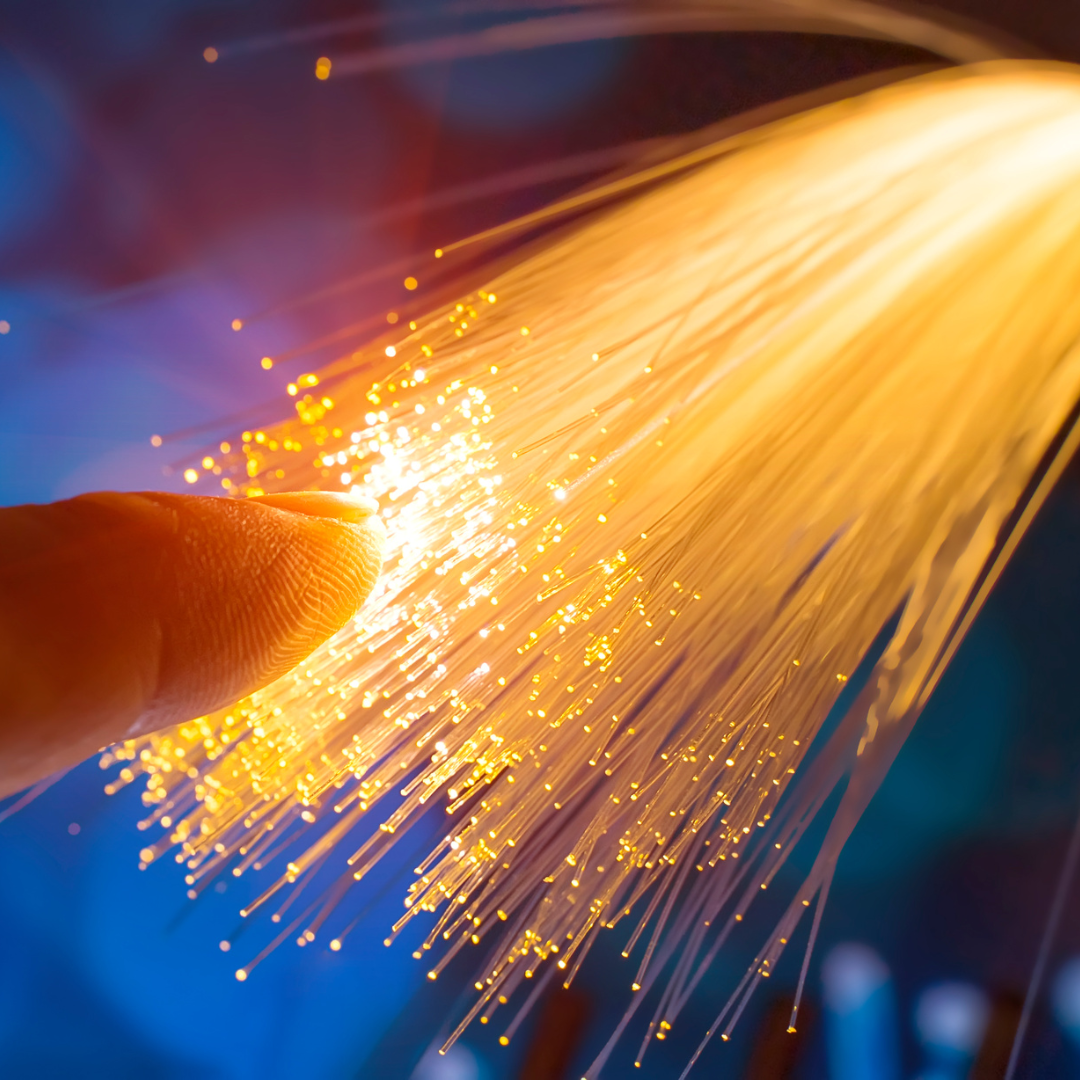Are Poor Connections Upping Your Carbon Footprint?
Fiber optics is a type of cabling that has become almost ubiquitous in internet technology. These cables are typically made of plastic or glass and transfer data using light signals from one end to the other. While fiber optics have received extensive attention and praise over the past few years for their superior speeds and reliability, their reduced environmental impact is one of their less widely known benefits.
Did you know that the internet accounts for almost 4% of the total global carbon emissions?1 This figure is also projected to double by the year 2025. However, the Internet has become an indispensable necessity in our society, and without it, businesses and personal connections would struggle to thrive. We often take for granted having a reliable connection at all times.

Coming From Sustainable Materials
Internet cables are typically made of copper wires, and the connection uses intense electrical signals to transfer data. These cables typically have wider diameters and just generally use more material to produce and coat them. While this electrical connection is more energy intensive in itself, copper is also an intensive material to source.
On the other hand, silicon dioxide used to make fiber optic cables is one of the most abundant materials on earth and has a significantly lower extraction footprint than copper. Silicon dioxide is a natural compound that is made from two of the earth’s most abundant resources: silicon and oxygen. This compound is found in sand, and to geologists, it’s also more widely known as “quartz”.

Built To Last
While nothing is future-proofed, fiber optics come close to it. Fiber optics are meant to be installed with a guarantee of having little to no maintenance. The cables themselves are also significantly less susceptible to damage from freezing, moisture, and other environmental interferences.2 The rate of repairs holds up as much as 50% less compared to typical copper cables.
More Reliable Connections, Less Commuting

With mining exploration becoming an increasingly important part of Canada’s northern economy, many companies continue to introduce new methods of mining operations in harsh northern climates. The push for innovating geotechnical resources in the north also means that transportation and development of northern infrastructure will be crucial for these industries that need regular servicing.
Outside of the logistical benefits of fiber optics, they have a much lower carbon footprint than regular copper cables. Having a more reliable connection means that businesses and those working from home offices will have to deal with fewer technical issues on a month-to-month basis. A reliable connection at home means less commuting into the office and outsourcing for technical issues.
Reliable Communications Wherever You Are
As a company that’s been in the business for almost 35 years, we’ve tried and tested almost every internet connection that’s been available. We’ve seen how the maintenance of different cable options has stood the test of time, which is why we can reliably say that fiber optics have changed the way we stay connected. Fiber cabling installed by Earth Communications is tested and certified to the highest standards; a necessary step to ensure reliable performance even in extreme pressures and environments while helping to reduce our carbon footprint.
Sources
-
- Griffiths, Sarah. (2020) Why your internet habits are not as clean as you think. https://www.bbc.com/future/article/20200305-why-your-internet-habits-are-not-as-clean-as-you-think
- Earth Communications. (2019) Fiber optic splicing. https://earth-communications.com/communications-services/fiber-optic-splicing/
Other blogs about telecommunications needs that you might enjoy:
